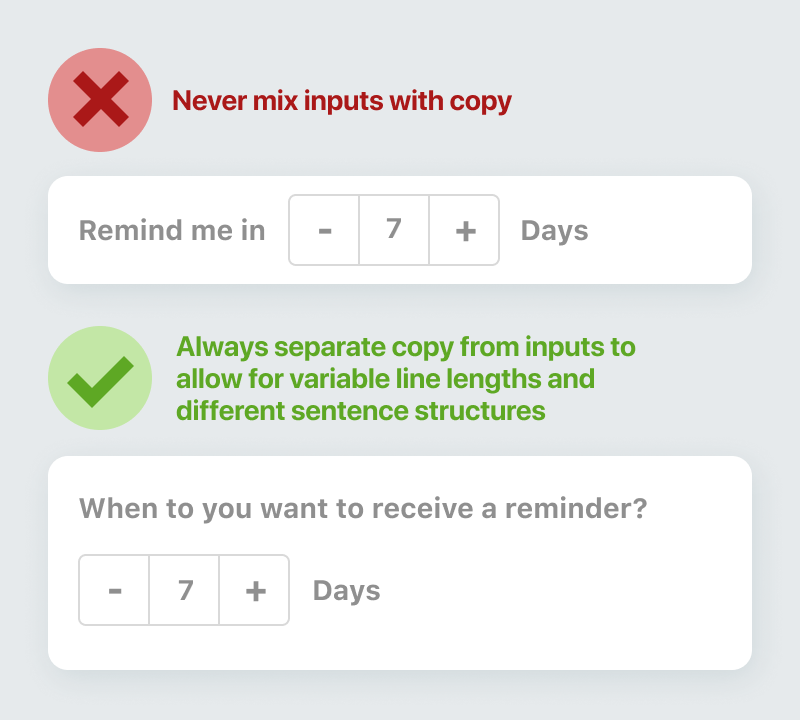界面設計語言
Designing for international audiences is challenging. I spent most of my career in Australia designing exclusively in English. Australian English is ‘unique’ in the sense that we are really into slang, puns, idioms.
為國際觀眾設計是具有挑戰性的。 我在澳大利亞的大部分職業都是專門用英語設計的。 在我們真的很喜歡語,雙關語,成語的意義上,澳大利亞英語是“獨特的”。
This, for example, is a perfectly acceptable sentence in Australian English:
例如,這是澳大利亞英語中一個完全可以接受的句子:
Shazza and Dazza went to the Gabba to see Acca Dacca
沙扎(Shazza)和達扎(Dazza)到加巴(Gabba)看阿卡(Acc Dacca)
Translation:
翻譯:
Sharon and Daren went to the Brisbane Cricket ground to see ACDC.
沙龍和達倫前往布里斯班板球場看ACDC。
出國 (Moving abroad)
In 2017 that all changed. I left behind my homeland of confusing slang and moved to the Netherlands to work for Booking.com as a UX designer. Booking is a Dutch company but I work with a very diverse group of people from around the world.
在2017年,一切都改變了。 我離開了of惑人心的家鄉,搬到荷蘭作為UX設計師在Booking.com工作。 Booking是一家荷蘭公司,但我與來自世界各地的許多人一起工作。
It’s a challenging job, you have to design a globally scalable product that needs to be translated into 40 different languages.
這是一項具有挑戰性的工作,您必須設計一種全球可擴展的產品,需要將其翻譯成40種不同的語言。
Fortunately, even if you’re a monolingual guy like myself (although I do speak a little bit of Spanish) there are some tricks you can use to design interfaces that will work in any language.
幸運的是,即使您是像我這樣的會說英語的人(盡管我會說一點西班牙語),也可以使用一些技巧來設計適用于任何語言的界面。
留出更多副本的空間 (Leave room for more copy)
English words are compact and sentences are concise.
英語單詞緊湊,句子簡潔。
Not every language is like this though. Bulgarian in particular has some very long equivalents to short, succinct English words like “edit”. This is a big problem if your interface needs to adapt to different languages.
并非每種語言都是這樣。 特別是保加利亞語,與“ edit”之類的簡短,簡潔的英語單詞有一些非常長的等效項。 如果您的界面需要適應不同的語言,這將是一個大問題。
Always leave plenty of room for those buttons.
始終為這些按鈕留出足夠的空間。

語言和貨幣與位置不同 (Language and currency are not the same as location)
Never assume that just because someone is located somewhere they also speak the language. There will always be expats living abroad or tourists using your product.
永遠不要以為僅僅因為某人位于某個地方,他們也會說這種語言。 總是會有外國人居住在國外或游客在使用您的產品。
Let the user decide which language they want to use regardless of where in the world they are.
讓用戶決定他們要使用哪種語言,而不管他們身在世界上什么地方。

數字格式 (Number formatting)
It has often been said that mathematics is the universal language. While that might be true, numbers are formatted very differently around the world.
人們常說數學是通用語言。 盡管這可能是正確的,但世界各地的數字格式卻大不相同。
This can be a problem if you are creating input fields, for example:
如果要創建輸入字段,這可能是個問題,例如:

切勿將內容與輸入,下拉菜單或復選框混合 (Never mix content with inputs, drop-down menus or checkboxes)
This works in English, but not so much in other languages. It also means you will need to build and maintain multiple interfaces.
這可以用英語工作,但不能用其他語言工作。 這也意味著您將需要構建和維護多個接口。
The rule of thumb here is just don’t do it. Never mix inputs with copy.
經驗法則就是不要這樣做。 切勿將輸入內容與副本混用。

不要忘記從右到左的語言 (Don’t forget about right to left languages)
This is one I always forget myself, but it’s important. The majority of languages read right to left. Even Chinese and Japanese which historically read top to bottom do this on screen.
這是我經常忘記的自己,但這很重要。 大多數語言從右到左閱讀。 即使是歷史上從頭到尾閱讀的中文和日語也可以在屏幕上進行。
In the middle east things are different. Arabic and Hebrew read right to left. This means you need to be able to create a mirror image of your designs to accommodate these languages.
在中東,情況有所不同。 阿拉伯語和希伯來語從右到左閱讀。 這意味著您需要能夠創建設計的鏡像以適應這些語言。

Hope you have enjoyed this article and learned a thing to two.
希望您喜歡本文并學到了兩點。
翻譯自: https://uxdesign.cc/tips-for-designing-an-interface-in-any-language-31a02c96c216
界面設計語言
本文來自互聯網用戶投稿,該文觀點僅代表作者本人,不代表本站立場。本站僅提供信息存儲空間服務,不擁有所有權,不承擔相關法律責任。 如若轉載,請注明出處:http://www.pswp.cn/news/274459.shtml 繁體地址,請注明出處:http://hk.pswp.cn/news/274459.shtml 英文地址,請注明出處:http://en.pswp.cn/news/274459.shtml
如若內容造成侵權/違法違規/事實不符,請聯系多彩編程網進行投訴反饋email:809451989@qq.com,一經查實,立即刪除!





)

- Private Definitions — the where-clause)

)


——輸入輸出)





